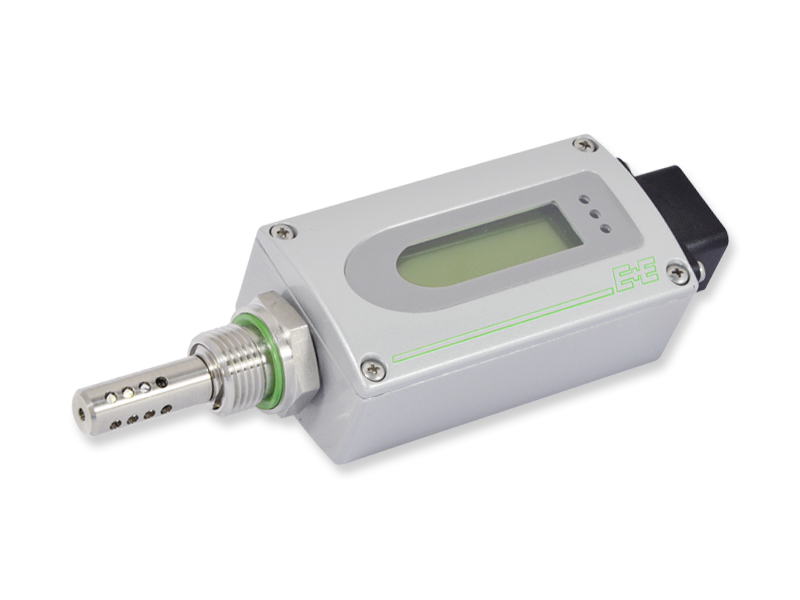紧凑型油中微量水分变送器

EE364
EE364系列是E+E公司为测量油品中的微量水分而开发的紧凑型工业用变送器,适用于OEM制造。产品的高测量精度和优异的长期稳定性,为变送器在线监测变压器油、润滑油、液压油和柴油提供了理想的解决方案。
EE364变送器可以测量油中水活性(aw)、温度(T)和计算绝对水分含量(x)(ppm)。参数的测量值通过两路模拟通道和一路数字通道输出,输出信号分别是4-20mA电流信号和MODBUS RTU通讯接口。
典型应用
- 监测
- 变压器油
- 润滑油
- 液压油
- 机械润滑油
- 柴油
特征
- 测量油中水活性(aw) 和温度(T)和水分含量(x) (ppm)
- 双通道4-20mA模拟信号输出
- MODBUS-RTU接口
- 最大耐压20bar
- G ½" ISO 或 ½" NPT工艺连接
技术资料
- 测量范围
- 0...1 aw
-40...100 °C - 精度
- ±0.02 aw
±0.2 °C
- 输出信号
- 2 x 4-20 mA / MODBUS RTU
- 供电电源
- 10-28 V DC
相关产品
下载 EE364
FAQ
The main difference is the hardware interface. The Modbus RTU protocol runs on RS485 Hardware while Modbus TCP/IP protocol runs on Ethernet hardware.
Calibration for a specific oil is a laboratory procedure for determining the saturation curve of the oil. The saturation curve is described by two parameters (A and B). These parameters are used for setting up the moisture in oil sensor for correct calculation of the water content (ppm) out of the measured temperature and water activity (aw).
Sensor replacement is possible for the EE360 models with the ordering code including PC4 (pluggable probe). Please see the operation manual for detail and spare part code ordering guide.
Please see the cleaning instructions.
No, coating is not available for the E+E MIO sensors.
The standard scope of supply of E+E MIO sensors includes an inspection certificate according DIN EN 10204 - 3.1. For details on calibration certificates please see our white paper "Calibration and Traceability in Measuring Technology".
No, mineral transformer oils from different manufacturers are quite similar. A and B parameters are the same.
Transmitter with "two-wire" technology receive the power from the process, and the signal is carried on return wire (closed current loop). With "three-wires" technology the power supply is separate from current output: 2 wires are the power supply and the third carries the signal.



